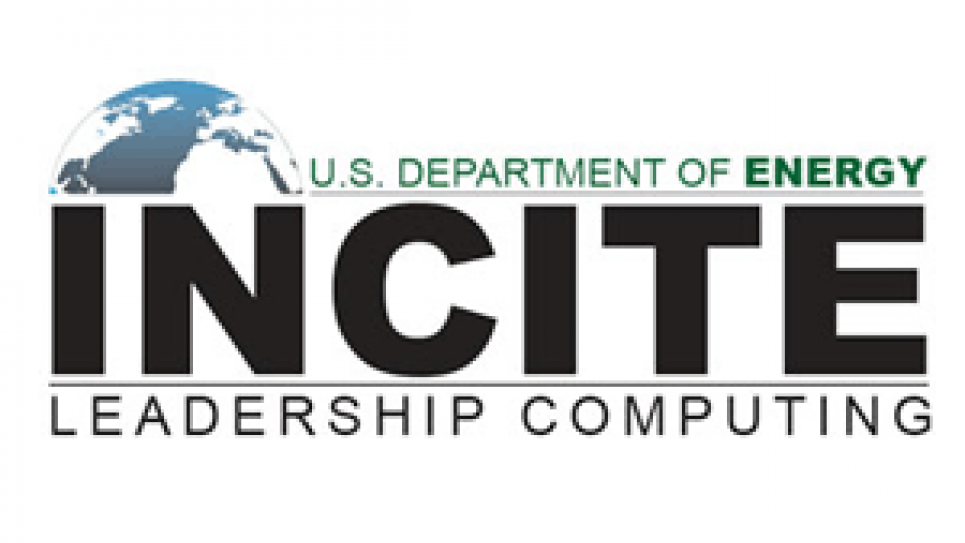
DOE Supercomputing Resources Available for Advancing Scientific Breakthroughs
The U.S. Department of Energy (DOE) announced today it is accepting proposals for a program to support high-impact scientific advances through the use of some of the world's most powerful supercomputers located at DOE national laboratories. Approximately 1.3 billion supercomputer processor-hours will be awarded in 2010 through the Innovative and Novel Computational Impact on Theory and Experiment (INCITE) program for large-scale, computationally intensive projects addressing some of the toughest challenges in science and engineering.
Researchers are currently using supercomputing time under this year's INCITE awards for a variety of projects such as helping to make new biofuels commercially viable and to design low-emission engines.
"The INCITE program is instrumental in driving America's leadership in science, which is vital for our economic prosperity, energy security and global competitiveness," said Michael Strayer, DOE Associate Director of Science for Advanced Scientific Computing Research. "INCITE provides access to unprecedented computing power and resources that will enable researchers to attack some of the most challenging problems in basic sciences through advanced simulation and modeling, which can reduce time-to-market and prototyping costs."
INCITE awards will go to researchers whose projects would not be possible or productive without the petascale (quadrillion calculations per second) computing and computational support available at DOE leadership-class supercomputing facilities at Argonne National Laboratory in Illinois and Oak Ridge National Laboratory in Tennessee.
"The INCITE program aims to accelerate discovery and innovation by awarding computer time at the DOE Leadership Computing Facilities to researchers tackling grand challenges in science and engineering," said James J. Hack, director of the Oak Ridge Leadership Computing Facility.
Large allocations of processor hours allow scientists to probe complex scenarios with unprecedented resolution and arrive at answers in days rather than decades. The number of processor hours available through INCITE will almost double in 2010 due to recent upgrades that have expanded capacity at both DOE leadership-computing facilities, which house the IBM Blue Gene/P system at Argonne and the Cray XT system at Oak Ridge.
"The INCITE program goes beyond providing access to supercomputers. A key aspect of the program is expanding the horizons of scientific thinking by connecting researchers with scientific and technical staff at DOE's computing facilities so the researchers can get the best scientific results from the machines," said Pete Beckman, director of Argonne's Leadership Computing Facility. "Future breakthroughs will stem from the fusion of knowledge from different fields applying high-performance computing and multi-disciplinary science."
In its 7th year, the 2010 INCITE program will grant scientists and engineers at universities, industry, national laboratories and other research organizations access to lightning-fast high-performance computing systems not commonly available in academia or the private sector.
Proposals will be peer-reviewed for: scientific merit, suitability of algorithms to perform well on a system's architecture, and computational readiness of a code to make effective use of the system by using a majority of its processors in a single run. Applicants can request allocations for one to three years. Current DOE sponsorship is not required for this program. Details are available in the Call for Proposals. Researchers may submit INCITE proposals until July 1. Award recipients are expected to be announced in November.
Past INCITE projects, have explored fields from astrophysics to nanotechnology, focusing on new forms of energy and climate change. Projects have simulated enzymatic breakdown of cellulose to help make production of biofuels commercially viable, coal gasification processes to help industry design near-zero-emission plants, and fuel combustion models that aid design of fuel-efficient, low-emission engines.
Computer models have also helped physicists use radio waves to heat and control ionized fuel in a fusion reactor and have aided engineers in designing materials to recover energy escaping from vehicle tailpipes. Moreover, simulation insights have enabled biologists to design new drugs to thwart Parkinson's disease and engineer the workings of cell membranes to detoxify industrial wastes.
DOE's Office of Science supports the two national Leadership Computing Facilities to ensure U.S. leadership across a broad range of scientific disciplines. This is the first year that the INCITE program will be co-managed by those facilities -- the Argonne Leadership Computing Facility at Argonne National Laboratory and the National Center for Computational Sciences at Oak Ridge National Laboratory.
To learn more about the 2009 INCITE projects, visit: http://www.science.doe.gov/ascr/INCITE/Docs/2009INCITEFactSheet.pdf.
Media Contact
Jeff Sherwood, (202) 586-5806